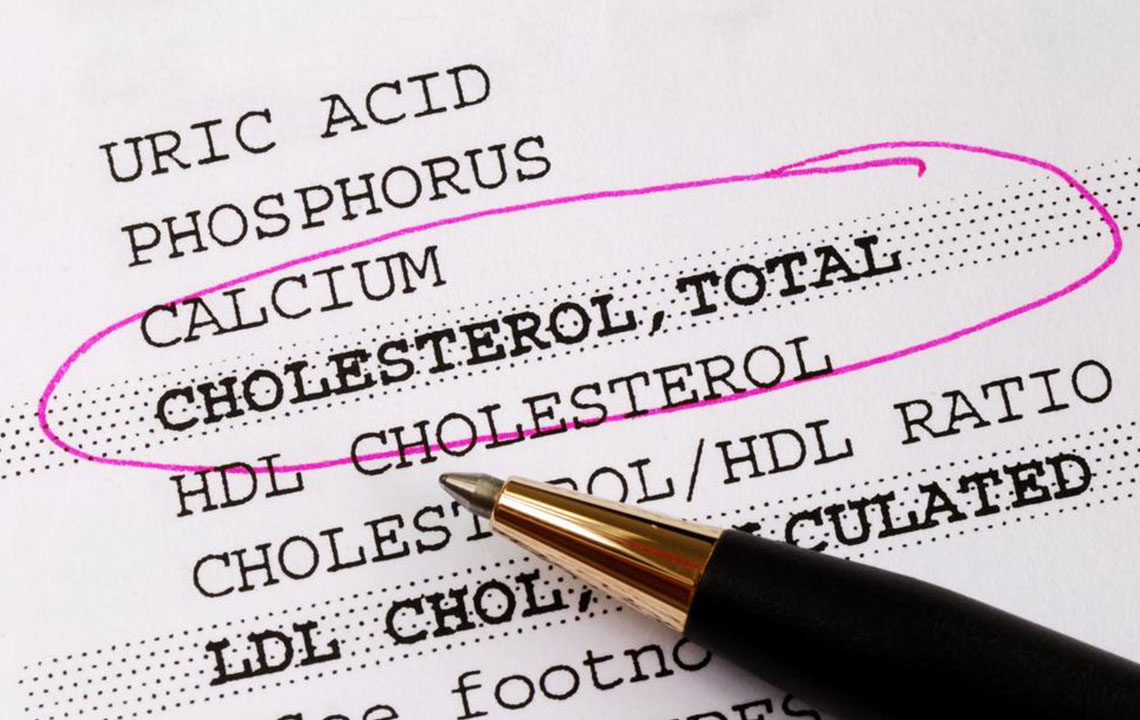Things You Need To Know About Cholesterol
Cholesterol is a waxy, fat-like substance that is present in all the cells of the body. Your body requires cholesterol in some amount to perform certain functions. Cholesterol is also found in some foods that you consume. However, when the level of cholesterol increases, it puts you at the risk of heart attacks or stroke. So, what is a normal cholesterol level? Keep reading to find out.
Types Of cholesterol
There are two types of cholesterol found in your bloodstream.

The level of triglycerides also accounts for the total level of cholesterol in your blood. It is a type of fat that can accumulate in the body over a period. A combination of high triglycerides and low HDL can be lethal. It increases the risk of several heart diseases.
It’s believed that the level of cholesterol starts increasing after the age of 20. It is thus recommended that every adult above 20 years of age gets his/her cholesterol level checked once in every five years. Men are at a higher risk of the ill effects of cholesterol than women. A woman in her menopause has more chances of suffering from increased levels of cholesterol.
What is a normal level of cholesterol?
A blood test known as lipoprotein panel needs to be performed to check the level. The test is performed after 10 hours of fasting. It gives information about your total cholesterol level, LDL level, HDL level and triglyceride level. This lipoprotein test will also help assess if you are at any risk of coronary heart diseases.
For adults, the total cholesterol level should be less than 200mg/dL. Levels higher than 240mg/dL state that you are at a higher risk of heart diseases. Young children having a family history of diabetes need to have their cholesterol levels checked.
Since children don’t know what a normal cholesterol level is, parents should get their child checked between the age of 2-8 and then again at the age of 12-16. Children who eat a healthy diet and are physically active have lower chances of having high cholesterol in their blood. Ideally, a child should have a level of 170 mg/dL of total cholesterol in the blood.
Risk factors that can affect The LDL level
One should aim at having low levels of LDL. However, certain factors may hamper your efforts.
Age – It can be tough for men above 45 years and women above 55 years to keep LDL in check.
High blood pressure – A person having a pressure of 140/90 mmHg or higher can have trouble keeping his or her LDL level in check. Also, certain medications used to curb high blood pressure may interfere with the process of lowering LDL.
Family history – If you have a family history of heart diseases or cholesterol levels, you are more likely to get affected by it.
Low HDL count – A level of less than 40 mg/dL can make it difficult for you to bring down your LDL cholesterol level.
Cigarette smoking – Tobacco smoke can interfere with your LDL level and make it difficult to bring it down.
How Can You Lower Cholesterol Level?
Now that you have a fair idea of what is normal cholesterol level, you must also know how you can lower it. With a little effort and patience, you can lower the levels of cholesterol in your blood. Incorporate simple changes into your daily routine for a healthy lifestyle.
Healthy diet – Your diet plays a crucial role in determining your cholesterol level. Healthy foods such as vegetables, fruits, whole grains, etc. must be a part of your daily diet. Avoid white bread, pasta, and other junk food.
Exercising daily and weight management – Include physical activity for about 30-60 minutes, five days a week to manage your weight and lower LDL level.
Healthy fats – Include healthy fats such as nuts, olive oil, avocado, etc. in your diet.
Reduce cholesterol intake – Reduce consumption of food products high in saturated fat such as whole milk and cheese.
Unnecessary use of drugs – You can consult with your doctor before taking any drugs to lower your LDL level. The drugs will be effective when you consume them along with other lifestyle changes.